Sustainability seen in the way IseJingu exists
IseJingu is the ``hometown of the Japanese spirit'' with a history of 2,000 years. Since ancient times, it has been a popular destination for people to visit Ise Shrine.
The `` ShikinenSengu'' event has been going on for a long time, in which IseJingu 's shrine buildings and sacred treasures are rebuilt and the gods transferred every 20 years, and each time IseJingu has been reborn to a more youthful appearance. . ShikinenSengu maintains the eternity of IseJingu, and at the same time, the lumber from the old shrine building is reused in various places, so ShikinenSengu can be said to be a sustainable culture ahead of its time.
This time, we will learn about IseJingu and sustainability, which has been cherished in the Ise-Shima region where the spirit of IseJingu is pervasive.
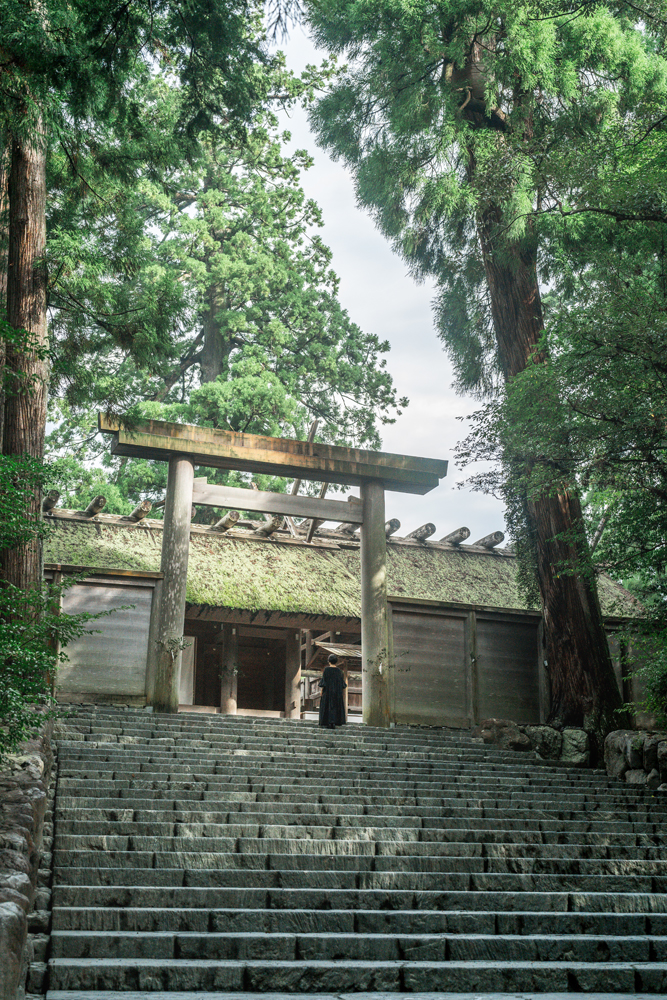

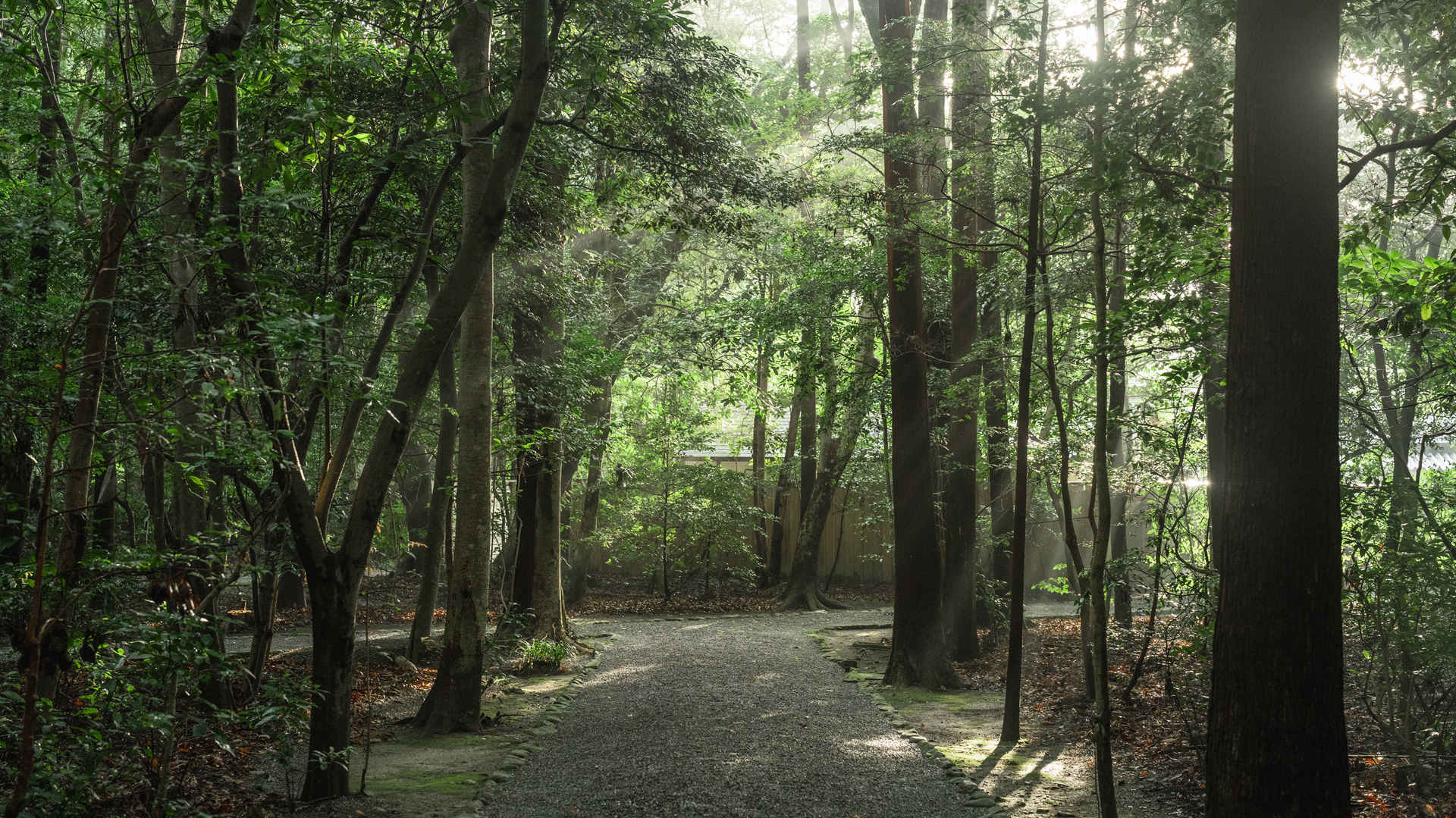
1. Visit Ise at least once in your life.
IseJingu, a place people dream of
IseJingu official name is "Jingu".
Jingu shrines include Kotaijingu (Naiku shrine) and Toyouke-daijingu (Geku), as well as 14 Betsugu, 43 seshu shrines, 24 subsidiary shrines, and 42 shrines located in and around IseCity It is a general term for all 125 shrines including the shrines under their jurisdiction.
IseJingu has a deep and continuous history.
Naiku, which enshrines Amaterasu-Omikami, has a history of about 2,000 years, and Geku, which enshrines Amaterasu-Omikami Toyouke-no-Omikami, who controls Amaterasu Omikami's meals, has a history of about 1,500 years.
During the Edo period, it was said that people should visit Ise Shrine at least once in their lifetime, and visiting IseJingu became a huge boom. At its peak in 1830, there is a record that 4.6 million people visited both Naiku and Geku in less than half a year, which is surprising. Many people have visited the shrine in recent years, with more than 9.72 million people visiting in 2019, and although the number decreased significantly due to the coronavirus pandemic, the annual number of visitors rose to over 6 million in 2022. Record the number of people. It is clear that this is a place that people still admire and visit.

The main shrine of Geku and Kodenchi. Sengu will be carried out on a site of the same size (Kodenchi) adjacent to the current shrine building.
IseJingu is in Tsunewaka,
Repeat playback in “ShikinenSengu”
ShikinenSengu is an event held once every 20 years in which all the decorations and furniture offered to the shrine and the gods are renewed, and the gods are transferred to a new shrine. ShikinenSengu began in 690 and has been repeated for 1,300 years, excluding the Sengoku period.
ShikinenSengu In addition to Naiku and Geku, Betsugu and UjibashiBridge, the entrances to Naiku, will be rebuilt. In total, 33 rituals and events will be held over a period of nine years.
In particular, the construction of the shrine building has continued for 1,300 years, with an unparalleled structure in which the same building is erected every 20 years.
To this end, it is essential to pass down highly reproducible techniques. It is said that many skilled workers are involved in ShikinenSengu, and some of them will also be involved in the next ShikinenSengu as the core of passing on the skills to the next generation. It has been built once every 20 years, and the techniques have been passed down from generation to generation.
IseJingu has maintained its ``tokowaka'', or always youthful and beautiful appearance, through the 20-year ShikinenSengu. The appearance of Tsunewaka embodies ancient traditions and techniques, and the ``old yet new'' shrine building has continued to be carefully protected until the present day.
The next ShikinenSengu is scheduled for 2033, and various events related to the Sengu will begin in 2025.
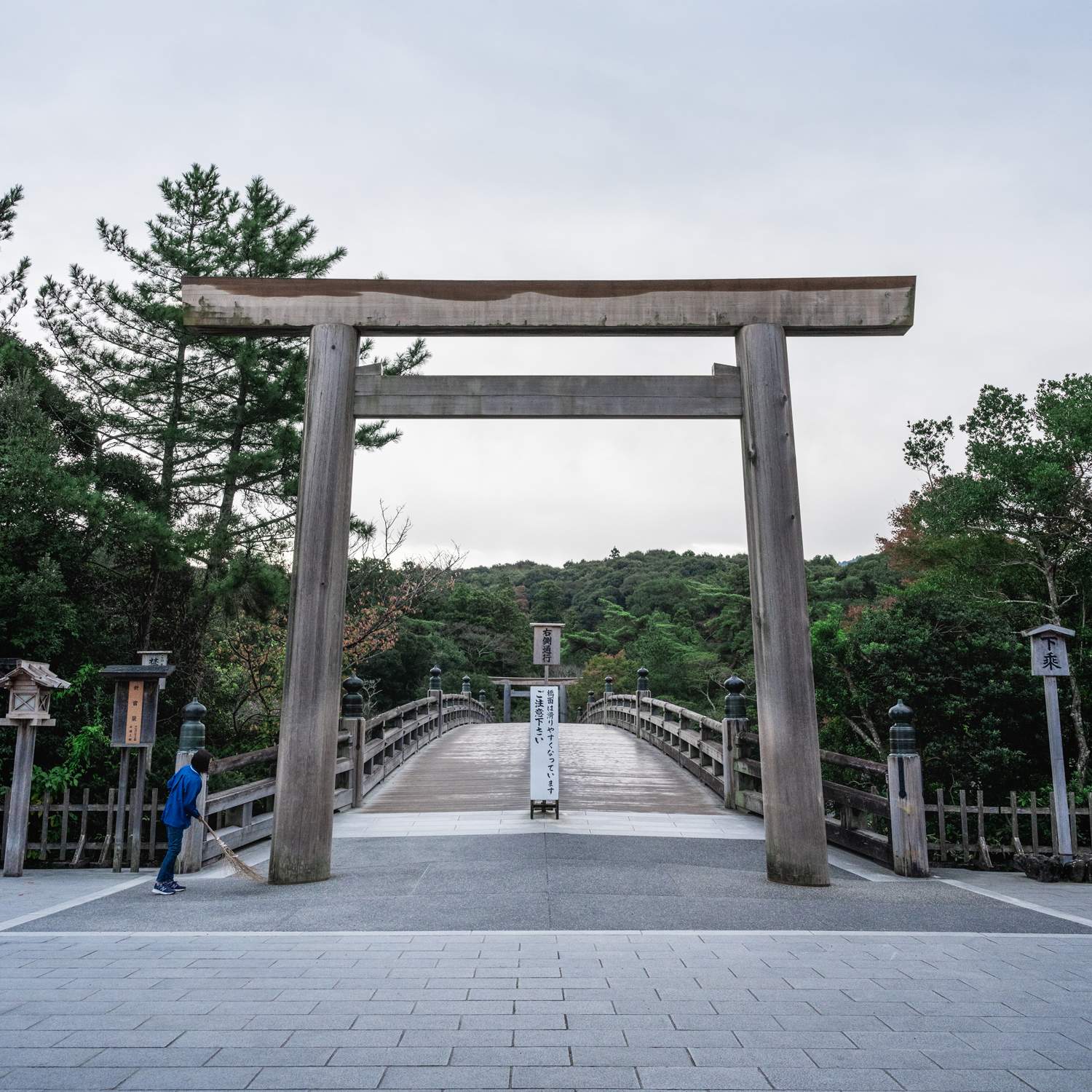
UjibashiBridge, which spans the Isuzu River, is the entrance to Naiku. It is said to be a bridge between the everyday world and the sacred world.
2. Held with the ShikinenSengu
reuse of wood
After the gods are transferred to new shrine buildings during ShikinenSengu, the old shrine buildings are demolished. It seems that these demolished structures will be given a new place to play.
There are examples of deconstructed pieces being reassembled and used as shrines connected to the shrine or shrines that were damaged by the disaster, and old materials being distributed to shrines across the country.
In addition, the pillars of the main halls of Naiku and Geku were used for the outer and inner torii gates of UjibashiBridge, and 20 years later, they were used for the "Shichiri no Watari" in Kuwana City, KuwanaCity Prefecture, and the "Seki no Oiwake" KameyamaCity It will be relocated to Torii.
By constructing a new shrine building, IseJingu will maintain its eternity, and at the same time, dismantled materials will be reused as much as possible. The eternity and sustainability seen in ShikinenSengu, which has been carried out since ancient times, can be said to be a ``sustainable culture'' ahead of its time.
In addition, in preparation for the upcoming ShikinenSengu in 2033, the `` UjibashiBridge Bridge Opening Ceremony'' to begin crossing the new UjibashiBridge is scheduled for Reiwa 11 (2029). A rare opportunity to experience the renewal of IseJingu up close is coming soon.
It has been continued by the people of the divine territory.
Traditional event “Okihiki”
Ise is a sacred capital that flourished as a town in front of Ise Grand IseJingu.
The people living in Ise have been called ``Shinryomin'' since ancient times, and have had various connections to IseJingu and its traditions and culture.
One example of this relationship is the ``Okihiki'' event during ShikinenSengu, in which materials used for constructing shrine buildings and other shrines are brought to the sacred precincts.
Okihiki is one of the few events during ShikinenSengu that the townspeople can participate in, and is a source of pride for the people of Jinryo.
In recent years, Okihiki participants have been invited from all over the country as ``Special Shinryomin,'' and the event has developed into a nationwide event.
Okihiki was held for two years, six and seven years before the Sengu Sengu, and the next one is scheduled for Reiwa 8 (2026).
At Naiku, ``Kawahiki'' is held using the Isuzu River, and at Geku, ``Rikuhiki'' is held by land route.
The sight of the Shinryō people wearing matching happi coats and carrying large imperial materials while chanting ``Enya, Enya'' is sure to energize the town of Ise.

(Provided by) Jingujicho
Beautiful country, rich in Ise
natural cycle
In the Nihon Shoki, Ise is referred to as a ``beautiful country.''
In search of a place to enshrine Amaterasu-Omikami, Wahime no Mikoto traveled through various countries and ended up in Ise. The word ``beautiful'' has the meaning of beautiful or desirable, and it is said that the city of Ise, with its scenic beauty and abundant nature, was chosen as the location for its construction.
Wahime no Mikoto built Naiku on the banks of the pure Isuzu River.
This Isuzu River is also called the ``Misuzu River'' because of the legend that Wahime no Mikoto washed the dirt from the bottom of her shrine, and it is also used as a washing area for visitors Naiku to wash their hands.
The clear water flowing through the Isuzu River makes us aware of the rich cycles of nature. Rain that falls from the sky is filtered by the mountains and flows into the rivers. Eventually, it flows into the sea and rises back into the sky.

“Beautiful” also has the meaning of delicious.
The nature of Ise-Shima nurtures an abundance of seafood and mountain delicacies. At IseJingu, we are self-sufficient in procuring the blessings of nature of Ise-Shima, such as growing rice, vegetables, and fruits using water from the Isuzu River and making salt from FutamiuraBeach, and offering them as food for the gods on a daily basis. are doing.
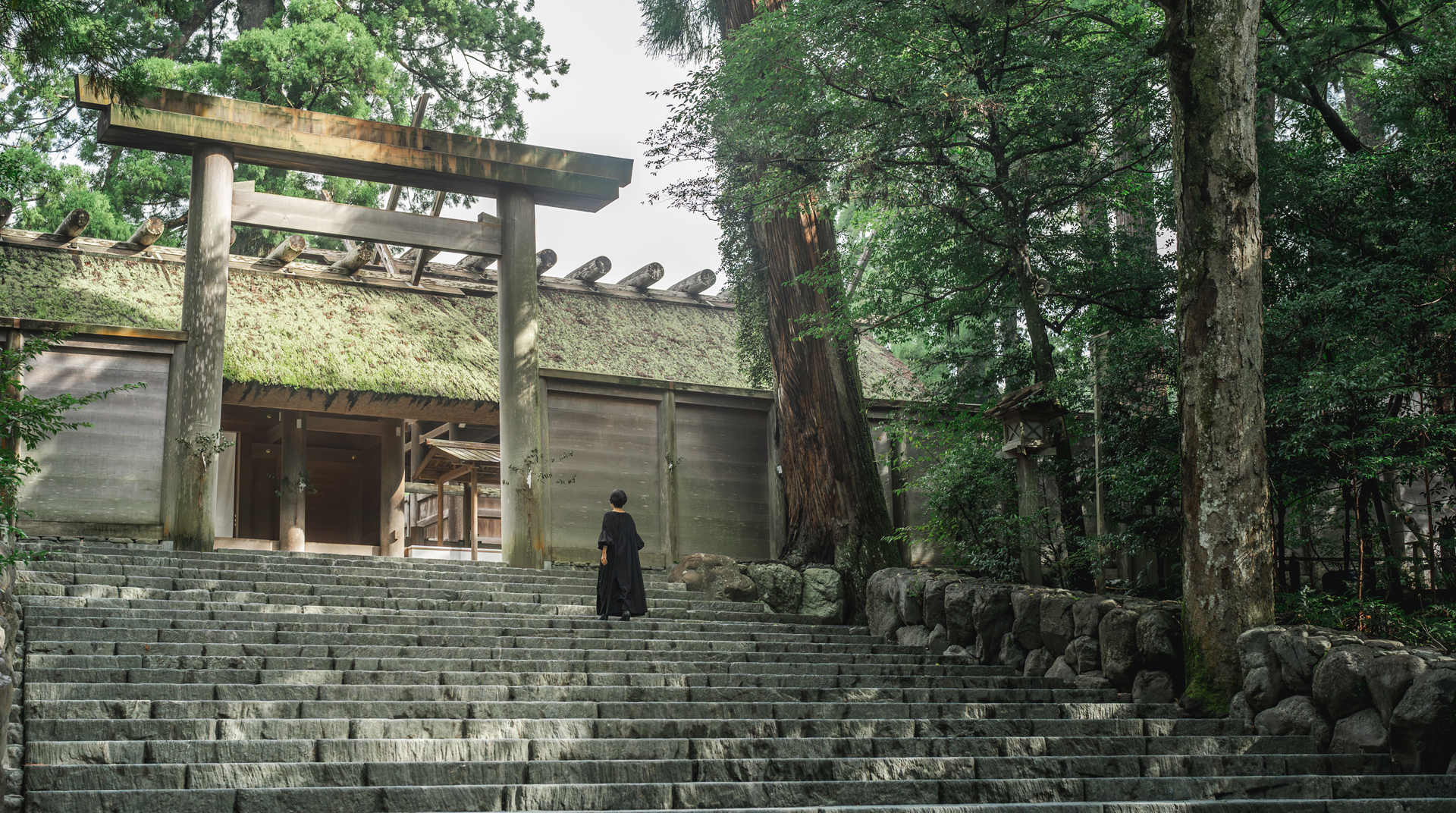
Kotaijingu (Naiku), which enshrines Amaterasu-Omikami, the great ancestor of the imperial family
3. “Don’t catch too much”
The culture of Ama divers is important.
Sustainability that lives in the region
At IseJingu, in addition to ShikinenSengu held once every 20 years, regular events continue to be held in the old style approximately 1,500 times a year.
One of the most important of these events is the ``Kanamesai'' held in October. It is an event in which the rice (new grain) harvested that year is first offered to Amaterasu-Omikami to express gratitude for the blessings, and the largest number of offerings to the gods are made during the year.
One of the sacred offerings is abalone caught by Ama divers in TobaCity.
At IseJingu Festival, abalone prepared at the ``Jingu Goryomai Preparation Center'' located in kuzakicho, TobaCity City is offered as Noshi Abalone.
The ama culture also shows a long-established, regionally unique sustainable culture.
This time, we spoke with active AmaHut(Amagoya)divers at the osatsu hut `` Osatsu-kamado'' in kuzakicho, a town next to Kunisaki Town where Noshi Abalone is prepared and where the largest number of ama divers live in Mie Prefecture.

"For generations, we Ama divers have protected the limited seafood by not over-harvesting it so that our lives can continue with the bountiful bounty of the sea."
The Ama divers have decided as a community not to take abalone smaller than 10.6 centimeters, and set a diving time of 1 hour to 1 hour and 30 minutes. It's called the ``open-mouth system,'' which limits the number of days and hours of operation depending on the season, weather, tide, etc.
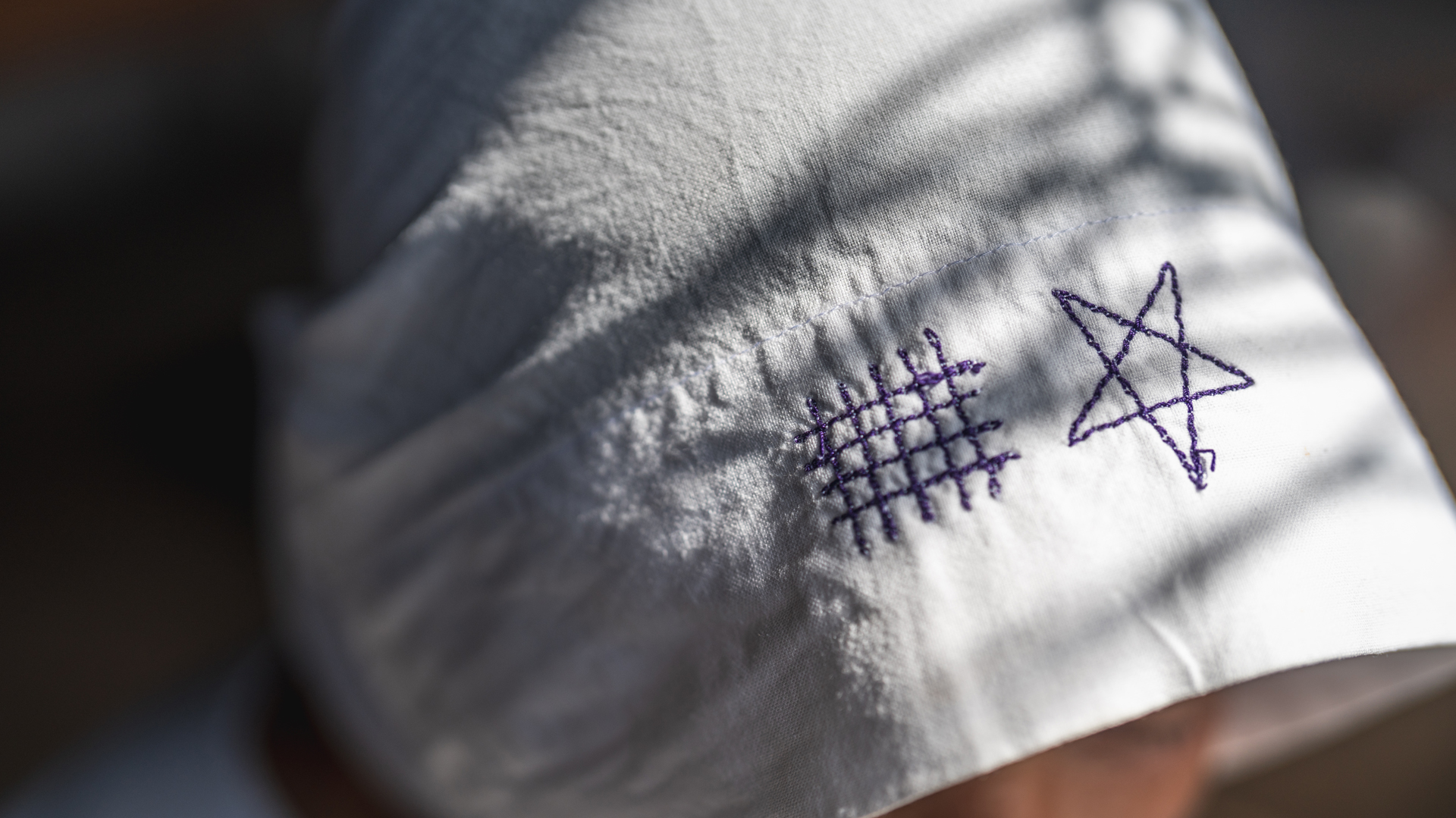
Ama divers always wear a ``Seman Doman'' to protect them from evil spirits. A custom that shows the ama divers’ reverence for nature.
Ama culture is currently attracting attention from people in Europe and the United States, who have a strong awareness of ethical consumption. AmaHut(Amagoya)are highly regarded as places where you can not only taste the seafood of Ise-Shima, but also learn about the unique culture of the area, as well as the lifestyle of the ama divers, and the sustainable lifestyle of living in harmony with nature.
The origins of Ama go back to the Jomon period. During the Edo period, it became the subject of ukiyo-e prints, and its unique culture has been attracting attention since ancient times. However, currently the number of ama divers has decreased significantly. In addition to a shortage of fishermen, major factors are said to be a decline in fishing catches due to changes in the ocean environment.
``In the past, there was an abundance of abalone, so much so that one diver could catch 10 kilograms in one hour and 30 minutes of fishing, but now there are times when it's only two or three, and you can clearly catch abalone. The amount is decreasing,” says Ama.
Today, Toba and Shima's Ama fishing is designated as an important intangible folk cultural property of the country. Be sure to visit AmaHut(Amagoya)to experience the precious ama culture and learn about the changing marine resource environment.
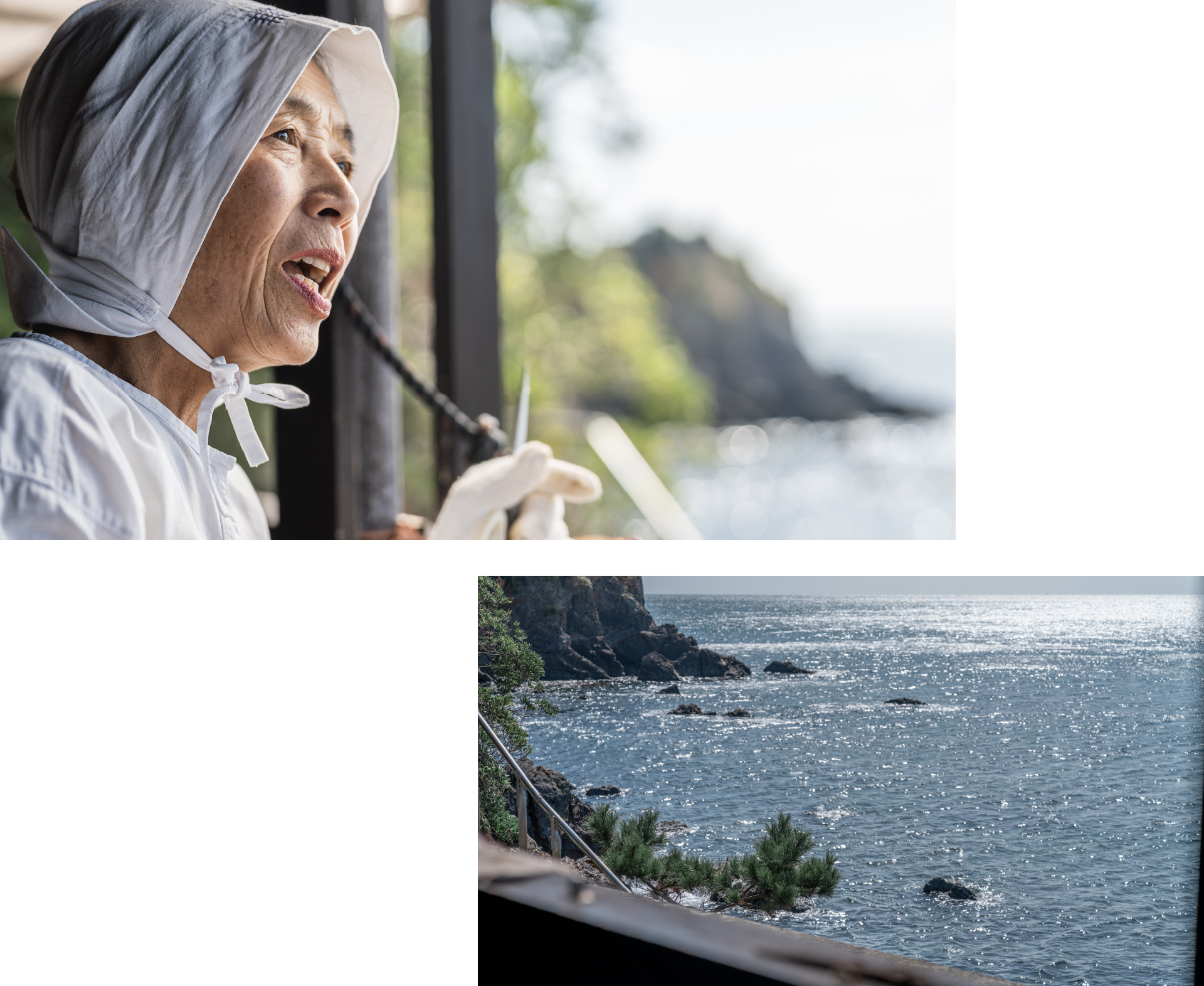

pervasive since ancient times
sustainable culture
Sustainable culture has permeated IseJingu, including the Shikinen Sengu ShikinenSengu Shrine since ancient times, Shinto rituals, and the local culture and customs surrounding these festivals. By learning about Shinto rituals, traditions, culture, etc., we can gain hints about what we should value now and a prosperous future.
Information such as address
[Kotaijingu (Naiku)]
1 ujitachicho IseCity Mie Prefecture, 516-0023
[TEL] 0596-24-1111
[Toyouke-daijingu (Geku)]
279 Toyokawacho IseCity Mie Prefecture, 516-0042
[TEL] 0596-24-1111
[AmaHut(Amagoya)“ Osatsu-kamado”]
〒517-0032 osatsu Beach, TobaCity Mie Prefecture
[TEL] 0599-33-7453 (osatsu Ama Cultural Museum)














